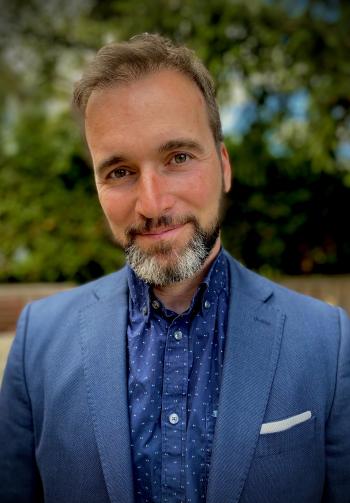
With a healthcare system under strain, and access to primary care in Ontario an ongoing challenge, a new clinical program, titled “Improving Patient Access to Care in the Community” (IMPACC) has launched in York Region, in collaboration with the Department of Health and Society. The first cohort of paramedics enrolled in a new course to support the clinical program and model of care have completed their education and will be bringing an expanded offering of services to York Region.
“IMPACC represents a pretty significant change in the core infrastructure of paramedicine,” says Assistant Professor Walter Tavares, Program Supervisor of the Department of Health and Society’s Joint Specialist Program in Paramedicine, and Director of the Paramedicine Collaborative at the Department of Family and Community Medicine. “What we're talking about is supporting the redesign of the 911 system to better align the needs of the public with the services provided by paramedics.”
The IMPACC model of care aligns with a report from the Paramedic Chiefs of Canada on which Prof. Tavares was the lead author, that called for paramedicine to attend to both health and social needs of patients and their communities, and to integrate with other healthcare providers Alongside the Family Health Teams, Ontario Health Teams and the Ministry of Health, Prof. Tavares has been working to help implement the report’s recommendations. York Region is the first municipality to see paramedics trained under the model, go into action.
The IMPACC model aims to align the delivery of paramedic services with the needs of patients and to better integrate paramedicine within interprofessional primary care teams. Prof. Tavares explains that a significant number of 911 calls don’t require emergency care, and might be better served at times with primary care services that paramedics are often unable to provide. “Many patients may not need emergency services or the emergency department, and the services that paramedics have been equipped with to support patients in that moment only accounts for about 20% of the interactions,” explains Prof. Tavares. "For the other 80%, paramedics are often poorly equipped to provide needed services. This program aims to increase that alignment, so that when paramedics attend a call, they can do more for patients as part of a larger interprofessional primary care team.”
For instance, currently paramedics have the training to defibrillate patients with lethal heart rates, or intubate patients unable to breathe. But cases in which these procedures are necessary amount for only a small but important proportion of paramedic responses, explains Prof. Tavares. “More common are low acuity conditions or event that require services consistent with primary care needs. To support these patients we need better planning, better coordination of care, better diagnostic ability, and the ability to make good decisions about what additional services ’might be necessary.”
Prof. Tavares gives the example of two patients with pneumonia. Both might contact 911 because they are having trouble breathing, but the care necessary might differ depending on how advanced the pneumonia is, the patient’s social circumstances, and the accessibility of primary care and other community health care resources. Patients in the late stages might very well need advanced and emergency interventions, and to be transported to hospital, while this those in the earlier phases may be cared for at home or in the community, supported by a care coordination and continuity plan. The new model is allowing paramedics to support both patients, not just those experiencing an emergency.
The program was a collaboration involving the Department of Health and Society, the Paramedicine Collaborative at the Department of Family Medicine, the Team Primary Care initiative and York Region Paramedic Services, and involved several health professionals. The program was accredited by the Office of Continuing Professional Development, at the University of Toronto. A second cohort will start training later this year and plans are underway to integrate this additional training into new advanced care paramedic training.
“It’s not just about giving paramedics more tools,” says Prof. Tavares. “It’s about rethinking and redesigning the way paramedicine is structured, including its integration with other healthcare partners. This particular project is setting the direction for that.”